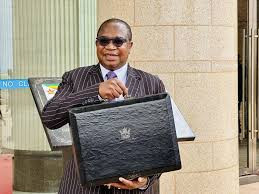
ZIMBABWE’S public debt has risen by 8,5% to nearly US$23,4 billion, a new government report shows, underscoring persistent fiscal pressures despite official pledges to contain expenditure.
Finance, Economic Development and Investment Promotion minister Mthuli Ncube revealed the figures yesterday while presenting the 2026 National Budget.
According to the accompanying Public Debt Report for the period ending September 2025, the country’s debt stock increased from US$21,5 billion recorded in December 2024.
The latest rise is largely driven by an 18,34% surge in domestic debt, which has climbed to US$9,79 billion.
This comes as the government continues engagements under the Structured Dialogue Platform on Zimbabwe’s Arrears Clearance and Debt Resolution Process, led by former African Development Bank president Akinwumi Adesina and former Mozambican president Joaquim Chissano.
Through the dialogue platform, authorities have committed to curbing spending, while seeking debt relief and bridge financing amounting to US$2,6 billion.
“As at the end of September 2025, the total public and publicly-guaranteed debt in US dollar-terms stood at US$23,4 billion, representing an 8,5% increase from US$21,5 billion, as at end December 2024,” the report stated.
The debt stock comprises external liabilities of US$13,6 billion and domestic obligations of US$9,8 billion.
- Interview: ‘Zim committed to tackling climate change’
- Finance minister reminded of PWDs
- Tackling climate change in infrastructure development
- New perspectives: Impact of tax policy on gender equality
Keep Reading
The report attributed the sharp rise in domestic debt mainly to ballooning arrears to service providers, which jumped from US$34 million in December 2024 to US$1,3 billion by September 2025.
However, it cautioned that these arrears figures were based on “raw data, which has not been validated by Treasury”.
A detailed breakdown shows domestic debt increased from ZiG217,6 billion (US$8,7 billion) at the end of December 2024 to ZiG261,1 billion (US$9,8 billion) by the end of September 2025.
“The increase is attributed to the rise in domestic expenditure arrears to service providers which are now estimated at ZiG34,1 billion (US$1,3 billion),” the report stated.
“This figure is still preliminary, as the Treasury will conduct a validation exercise for all the claims before payments are made.”
Between January and September 2025, government serviced domestic debt amounting to ZiG11,2 billion (US$420,42 million), with an additional ZiG4,8 billion (US$180,18 million) expected to be paid before year-end.
On the external front, the US$13,6 billion debt comprises US$6,5 billion in bilateral obligations, US$4,9 billion owed to multi-lateral lenders and US$2,2 billion in Reserve Bank of Zimbabwe liabilities assumed by the Treasury.
External arrears now stand at an estimated US$7,7 billion.
The country’s debt distress was reaffirmed in the January 2025 Debt Sustainability Analysis update, which concluded Zimbabwe remains in debt distress due to persistent external arrears and mounting penalty charges.
“Under the baseline macroeconomic path with shocks scenario, the solvency indicators with shock metrics — notably the present value of external debt relative to GDP (gross domestic product) and exports — are projected to remain well above the Low-Income Country Debt Sustainability Analysis thresholds (30% of GDP and 140% of exports) over the 2025-2035 projection horizon,” the report said.
Authorities say future borrowing will be guided by the new Medium-Term Debt Strategy for 2026–2030.











